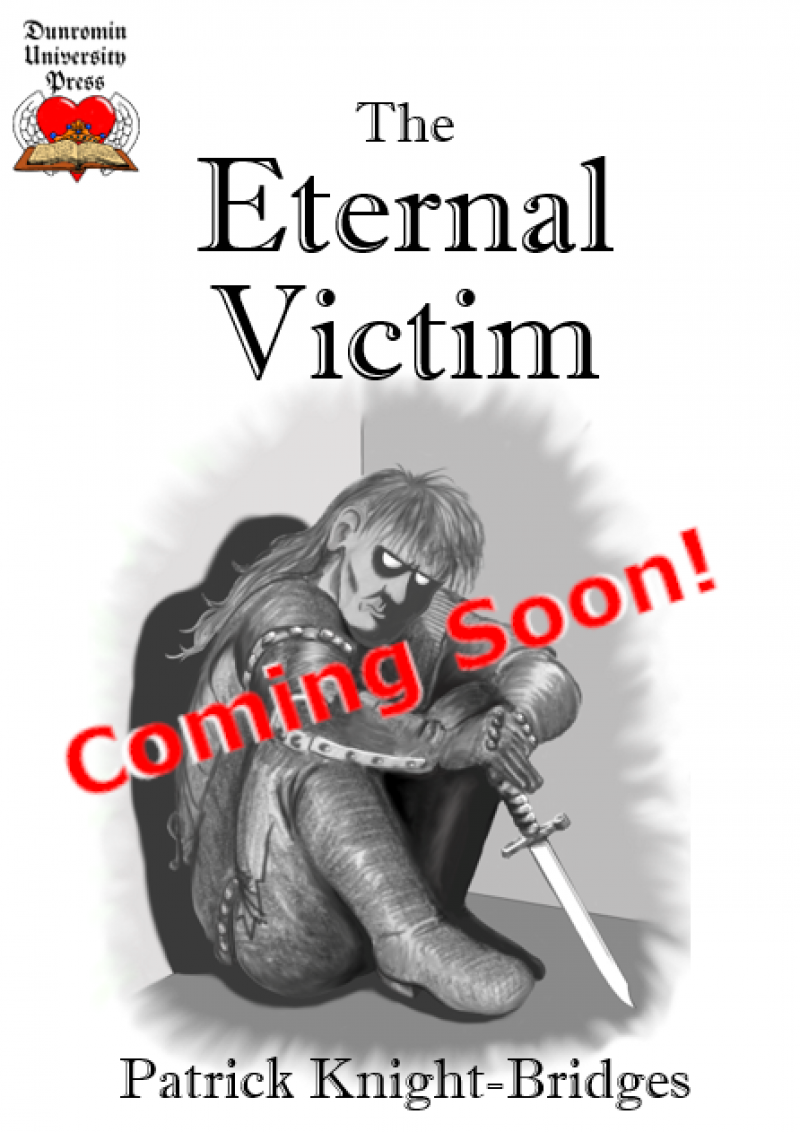To Align or Not to Align?
Dated: 23 Feb, 2023

The Alignment debate is old and well-trodden; the ongoing Wizards dilemma over Evil Orcs attests to the moral and political weirdness of it all. I know, it’s a tired subject – probably better to do away with it? I am not sure. Here’s my take on it and, as usual, your table your rules. I am looking for a discussion, not trying to tell people how to play…
In Dunromin we have alignments, but they are not enforced particularly hard except in certain cases where the alignment is tied to magical powers. To get something useful and fun out of this we have to first go back to why Alignments were first implemented and for this I am guessing…
1 – It’s a way of controlling players and keeping them consistent in their Roles. In our experience alignment becomes irrelevant when the players are role-playing properly; to go against their alignment is to go against the style of the character and is bad role-play – the character simply wouldn’t do certain things; it wouldn’t occur to them. Although this has to be balanced against the pain in the ass player who ruins the game “’cos it’s what their character would do” whom, in my experience, is a fiction anyway. All the players I have played with do not deliberately sabotage the party and the plot out of such silliness, although some have sailed pretty close to the wind at times…
2 – It’s a way of indicating the temperament and inclinations of Monsters. This goes to easily understand their likely attitudes towards society, property, other races and even each other. It could indicate their readiness to kill, injure and enslave people although not necessarily their immediate hostility to others. This is where people get their undergarments all bent out of shape. I don’t really get this – given that Humans are given as generally Lawful Good and we are demonstrably not all Lawful Good. We are talking, after all, about the behaviours of fantasy species that don’t exist in the real world and whose attitudes and behaviour are alien to us by definition. I think it’s rather arrogant to suggest they should behave according to current human social preferences. I am proudly “woke” by the way, as are most of our players.
So that gets us into a rant. Nope, sorry, don’t talk to me about modelling the right behaviour. How do we train people to deal with adversity? It’s as 1984 as any other extreme view. MORE IMPORTANTLY, what effect does alignment have on the game?
It’s a social lubricant; stereotypes, while always wrong, do help us manage in a world full of contradictory rules and habits. Dig deeper into any social group and you’ll find no one really conforms to the stereotype, ever, if you dig deep enough. If you get into that kind of interaction it’s up to the DM to come up with some variance on the standard to make it interesting. That’s down to the skill of the DM.
How do we implement Alignment on Barnaynia?
Alignment, like behaviour, is often said to be a choice – we don’t subscribe to that ideal. People often claim that behaviour, particularly bad behaviour, is a choice. It simply isn’t. From the day we are born we are subject to social pressures, social engineering and indoctrination. Society and other forms of conditioning, not choice, determine our core behaviours and values. If you don’t agree, read up on Pavlov’s Dog. Changing those values is difficult, uncomfortable and often puts us at odds with those around us. Most in society think those values are perfectly right and proper and will resist any attempt to change them. Societal change is VERY difficult, takes a long time and old habits die very, very hard indeed. So it is with Alignment in Barnaynia.
Alignment in Dunromin is more of a philosophy of life than a constraining doctrine. People can change alignment although it is difficult and damaging, at least socially and professionally, although we haven’t gone as far as describing this in the Guides published so far.
On a rules basis, the Alignment system provides guidelines for the characters with special abilities; the Paladin must behave in a certain way or lose all their powers, same for a Cleric, Monk or Druid, as these powers require a certain subservience to nature or a deity that they lose if they change alignment. A Ranger becoming non-good becomes a normal Fighter. Likewise, the Assassin will behave in a certain way or lose their powers, but how does that work without a supernatural power being responsible for their class benefits? Well, if they develop a conscience, for instance, they become morally uncomfortable with killing for money and no longer use their powers. This kind of ‘choice’ based self-limitation might not sit well with a player who wants to be Lawful Neutral but still kill things with a single stab. Tough. With that alignment you don’t feel it is right, any more, to use those kinds of techniques.
This implies that a character of one of the other classes can change Alignment as and when they choose without penalty. Not so.
Firstly, the character must have a reason for changing, a good reason. A long debate with a person who convinces them of the error of their ways; a conversion to a new religion or a rejection of an existing one; a significant life event that has made them re-evaluate their lives. It is unlikely that they have always felt this way and are just opening up – if this were the case the new alignment should have been their alignment all along and they should have been pretending, which makes no sense. For Player Characters at least; why roll that character if it’s not what you wanted to play in the first place?
Secondly, they must make the change plain to those around them. This will likely alienate friends, family and normal society. People will avoid the character and accuse them of having “changed” which of course they have. Some people might attack them verbally or even physically. The reaction should be similar to someone in the modern world joining a cult or changing their core religion.
Thirdly, the character will lose some levels. This is a game mechanic only to discourage playing fast and light with the rules and changing everything on a whim, but could be explained as a change in philosophy affecting the fundamental way the character interacts with the world (for a Fighter or Thief) or with the Cosmos (for a Magic-User). The number of levels lost is up to the DM but the rule of thumb we use is based on severity of the change; each “step” on the alignment chart is a penalty of losing a level (or losing 1d4 levels if you wish). Lawful Good to Neutral Good is one step, LG to CE is 4 steps – no diagonals. Loss affects all classes if Multi-classed.
Also, we don’t have alignment languages. I think we did away with these pretty much the same week we started playing AD&D, maybe even when we were playing the Moldovay Basic rules back in 1981 (although I can’t remember if Basic has alignment languages?). They just make no sense to us.
That’s our ten-cents. The rules given are ideas to adopt or reject as you like. The philosophy behind them is our, primarily my, current take on the situation. This may be a grenade in the social-media of your choice but it’s not intended that way. We are NOT telling you how you should think.



